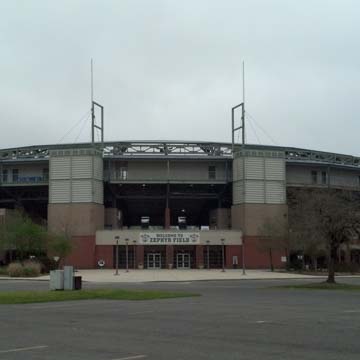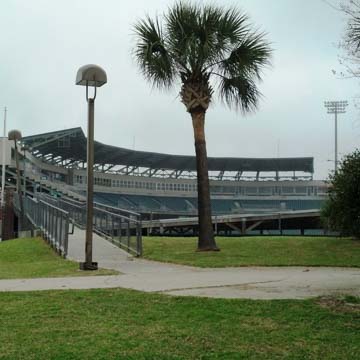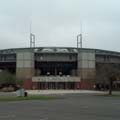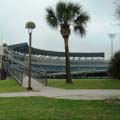In 1990, a 113-acre parcel of land was purchased from the Illinois Central Gulf Railroad, and during the next two years, then-governor Edwin Edwards brokered a deal to finance the stadium, which included issuing a $52.2 million bond. The Denver Zephyrs, a Triple A–rated minor-league team, was selected in 1992, the first professional baseball team to play in New Orleans since 1977. Construction finally began on the ballpark in 1995, two years behind schedule, in an area now known as LaSalle Park. The medium-sized stadium seats 10,000 people on three levels: two levels of grandstands, along with air-conditioned press and luxury boxes on the third tier. The stands are of typical stepped-concrete construction, supported by an exposed steel structure. The exposed structure allows visual access to the field from the circulation and concessions area and encourages the passage of cooling breezes. A canopy shades the top level. The design is dominated by an industrial aesthetic, evident in the clarity of structure, the materials, and the five circulation towers that ring the exterior. The principal facade overlooking the parking lot is, however, faced with brick—the requisite material of southern regionalism—red below the buff color on the second and third stories, with brown brick pilasters on the first level.
Nearby, at 6400 Airline Drive, is the 1000-seat Jefferson Performing Arts Center (Wisznia and Associates; opened 2015), controversial because of its cost overruns and construction delays. Its open spaces contribute to making LaSalle Park a regional venue for active and passive recreation in Jefferson Parish.


















